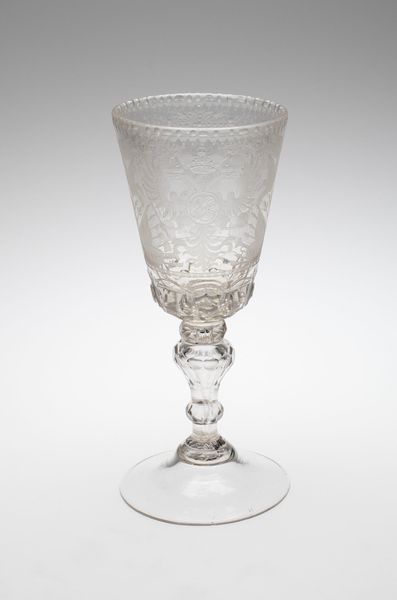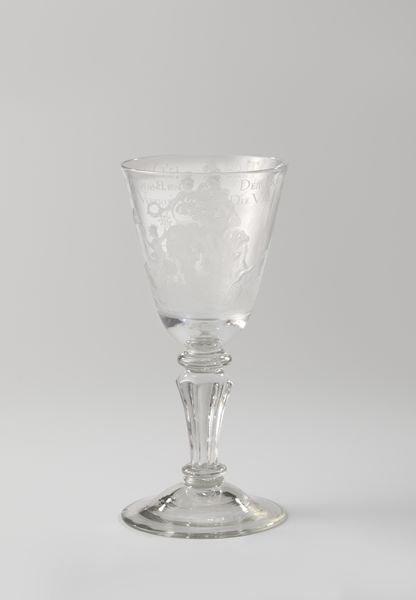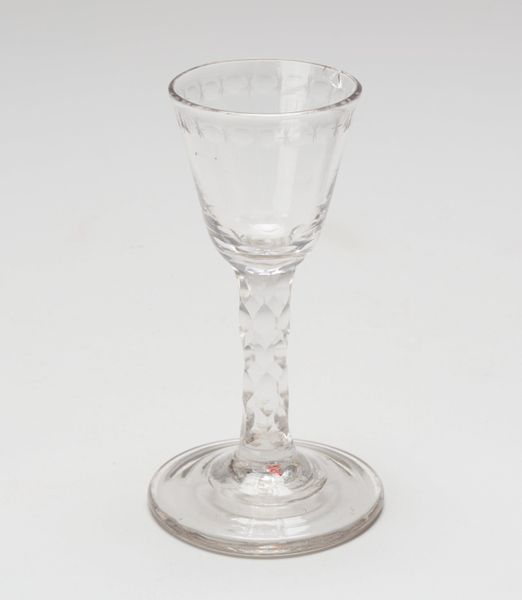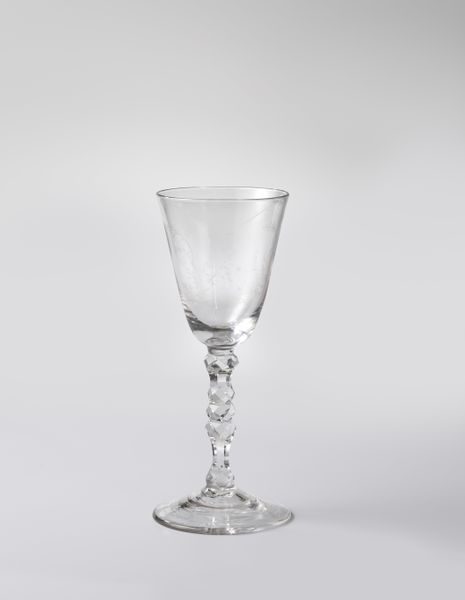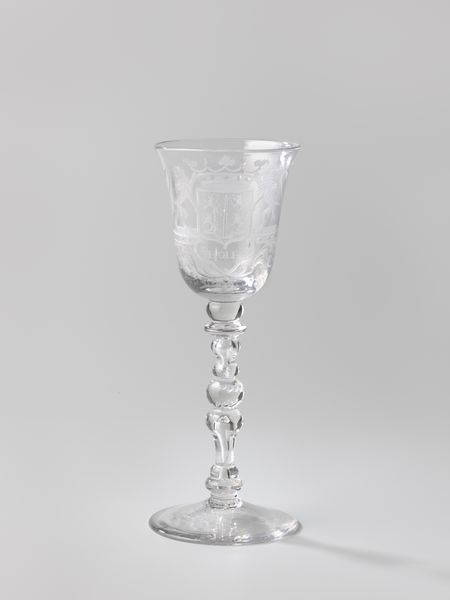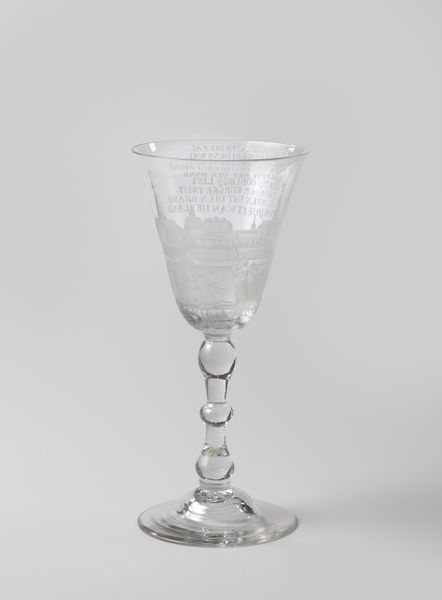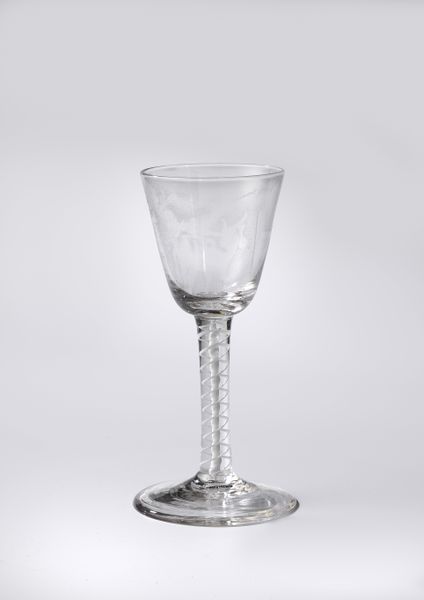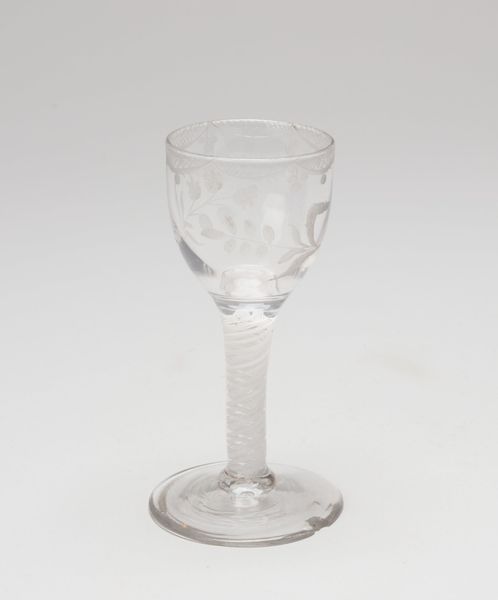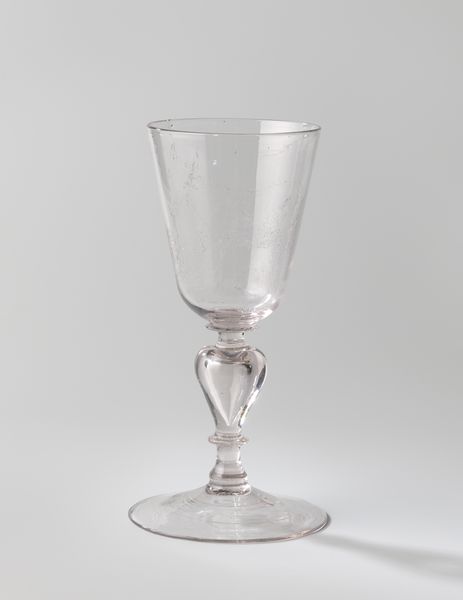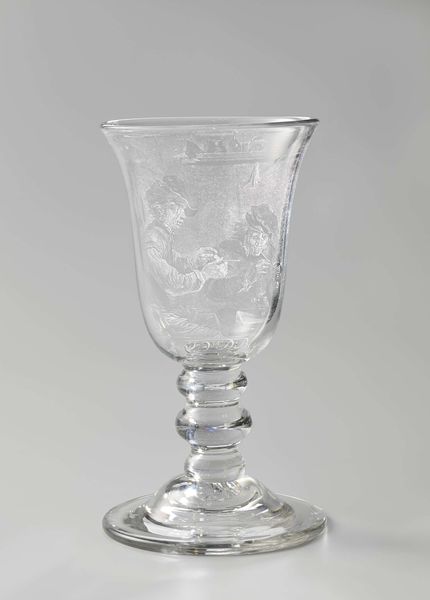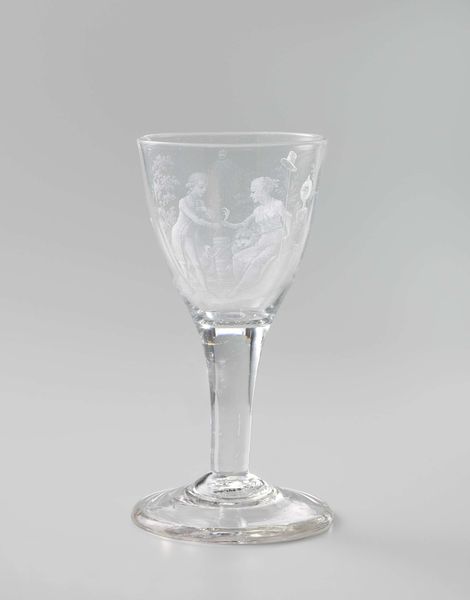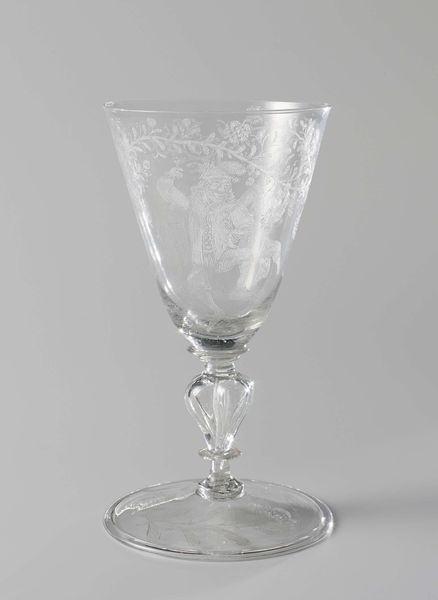
ceramic, glass
#
neoclacissism
#
ceramic
#
glass
#
ceramic
#
united-states
#
decorative-art
Dimensions: H. 9 in. (22.9 cm); Diam. 5 3/8 in. (13.7 cm)
Copyright: Public Domain
Editor: Here we have the "Celery Vase," crafted sometime between 1810 and 1825 by Benjamin Bakewell & Co. It's glass, and there’s something so delicate and fragile about its presence. What speaks to you when you see it? Curator: The vase whispers of early American aspirations, doesn't it? Celery, then a fashionable delicacy, displayed in a vessel of clear glass. Look at the etched Neoclassical motifs. These aren’t mere decoration; they're signifiers. Leaves, floral patterns…symbols of abundance, refinement, perhaps even a subtle nod to classical virtues in a new republic finding its identity. Does the transparency of the glass suggest anything to you? Editor: I guess the clarity emphasizes the celery itself, almost like putting it on a pedestal. But also the family’s wealth who can afford to showcase it in a nice vase. Curator: Exactly! Display is key here. Early Americans looked to Europe for cues of taste and sophistication, which is also where we get Neoclassicism from. And these vessels, while functional, became emblems of social status. It’s visual rhetoric – the family using objects like these to articulate wealth and status in their communities. Notice how these objects made their owners part of a bigger social class? Editor: That makes sense. So it's more than just a vase. It’s about belonging. A message encoded in glass. I see this vessel in a completely new light. Thanks! Curator: Precisely! And those messages, etched in glass, continue to resonate and transform even today. The symbols that outlast empires and the rise and fall of social norms.
Comments
No comments
Be the first to comment and join the conversation on the ultimate creative platform.
